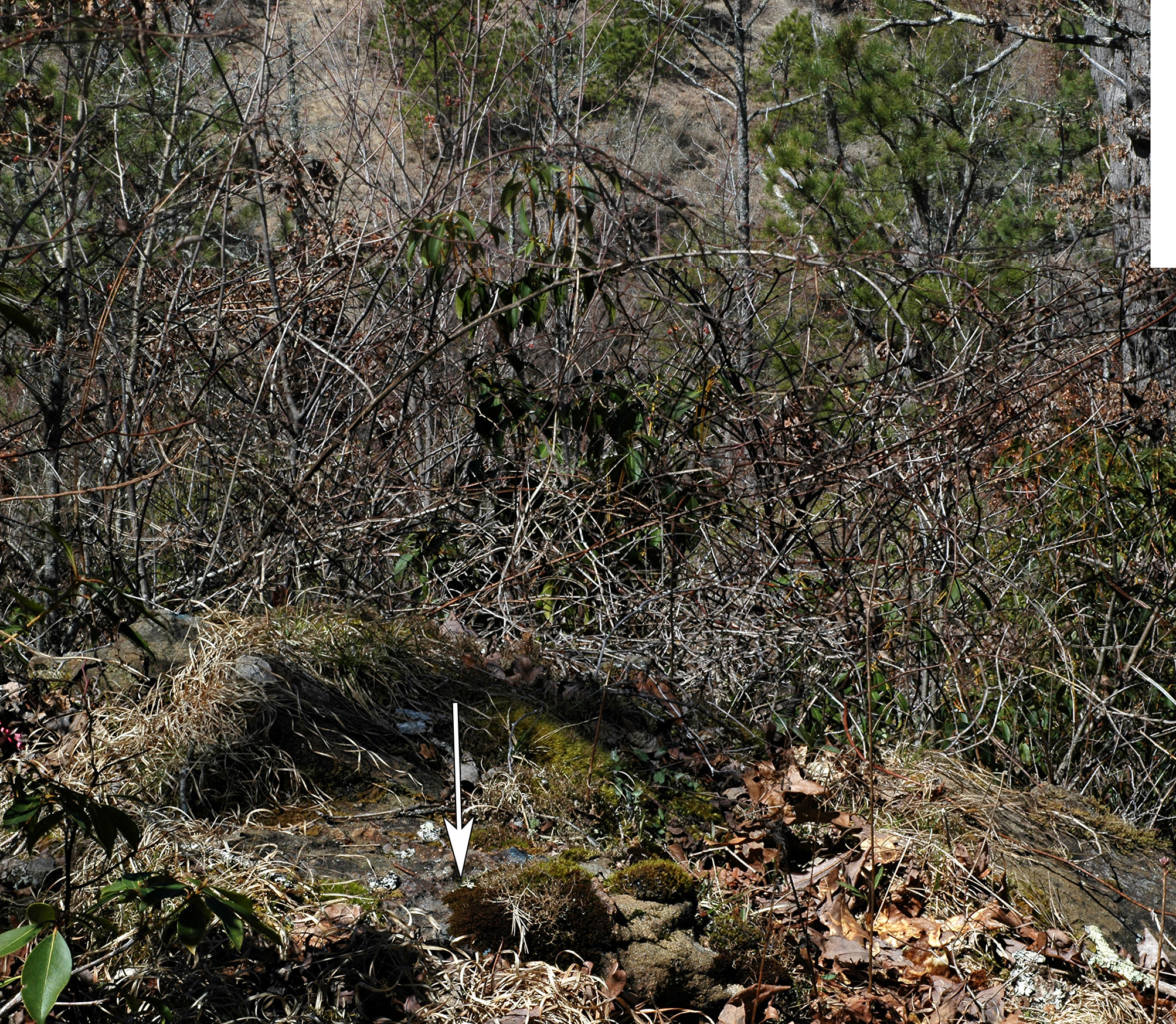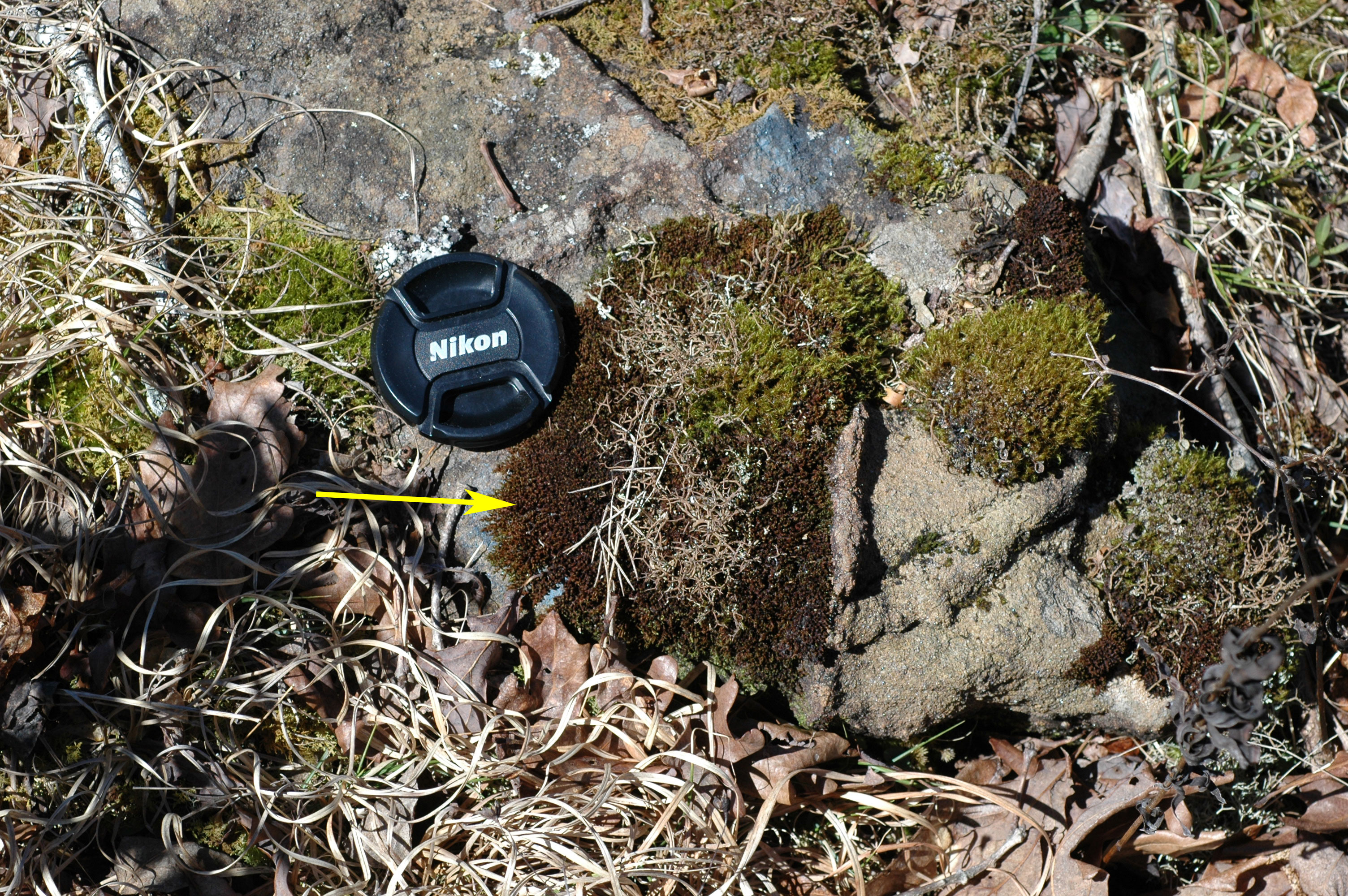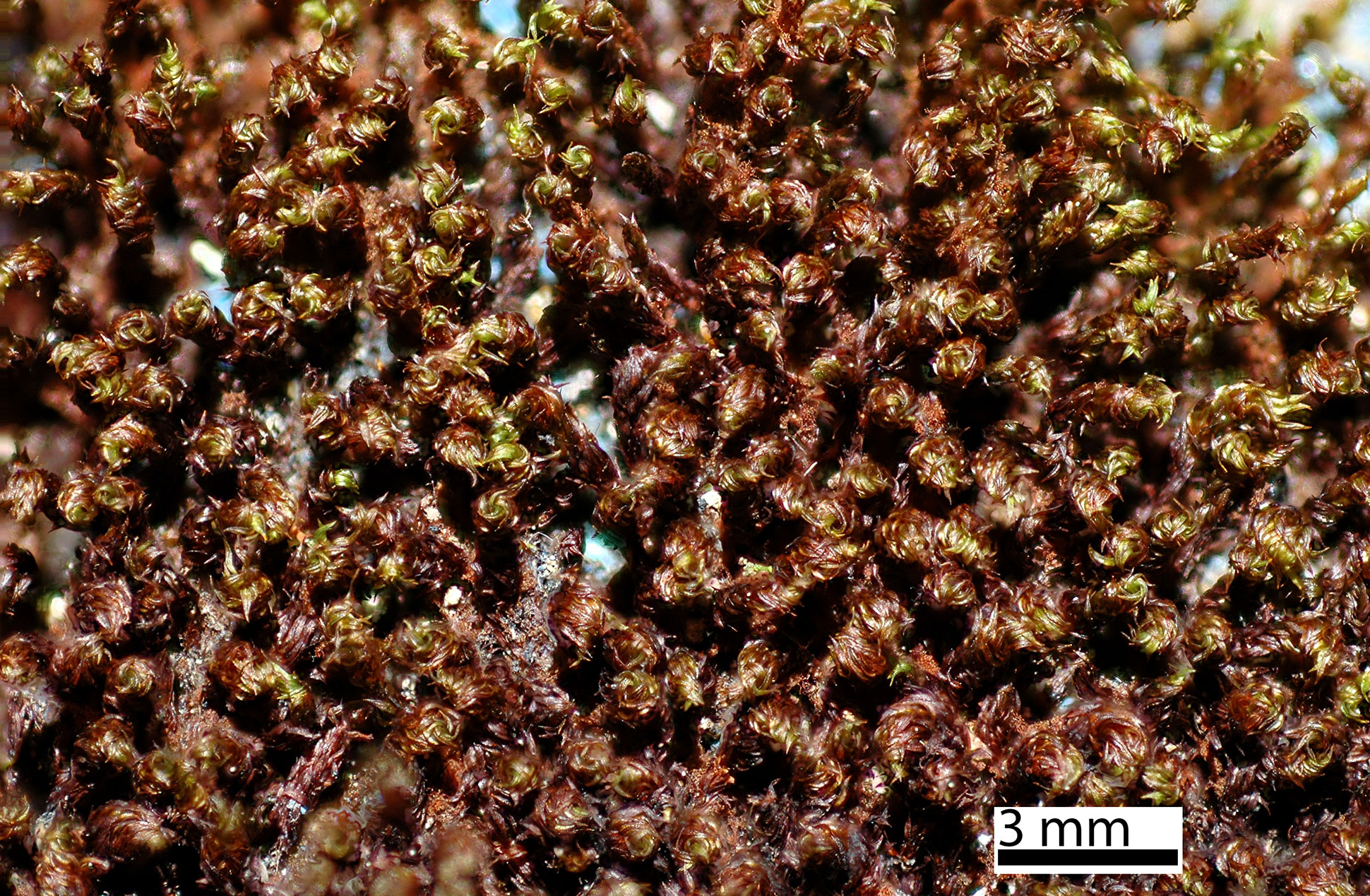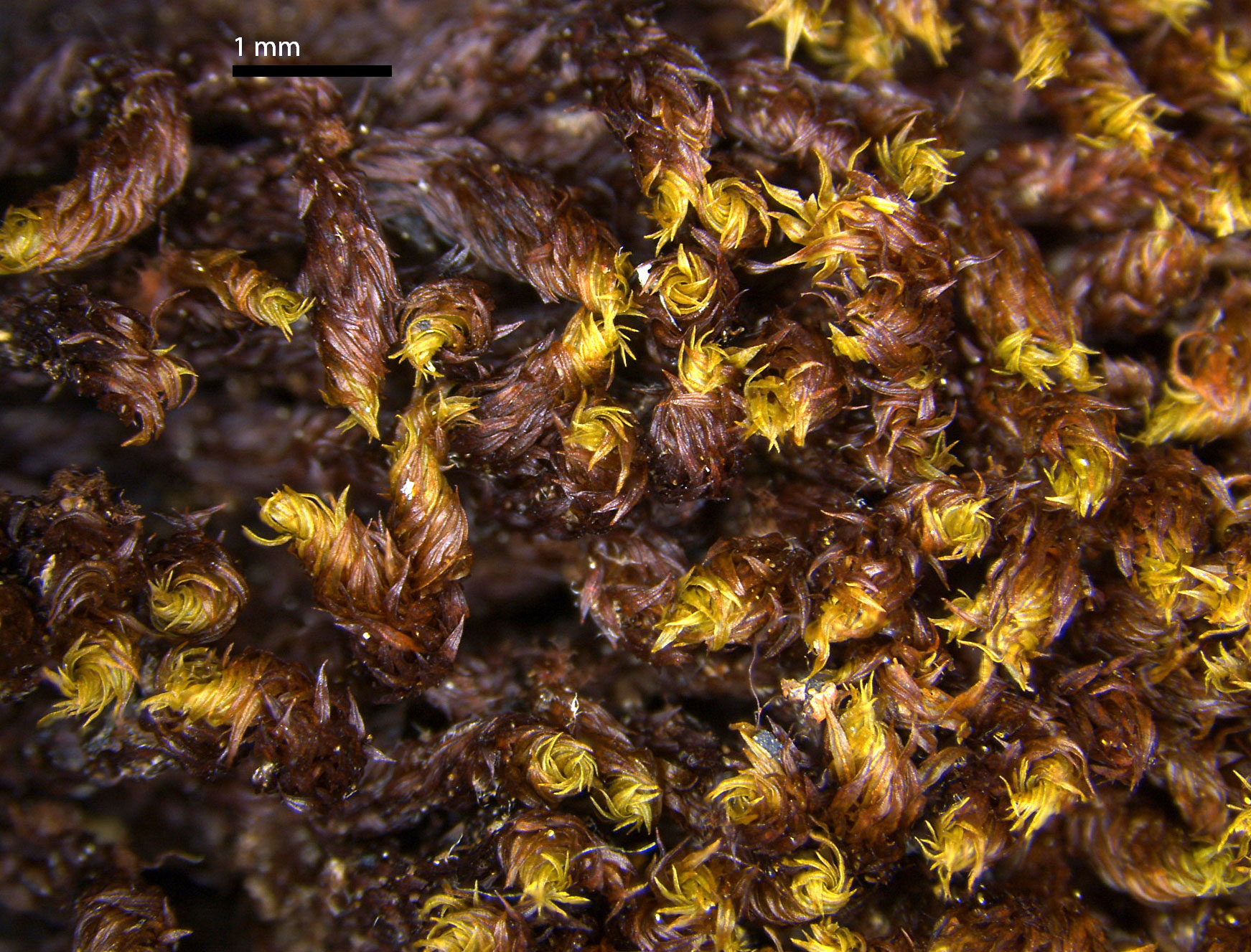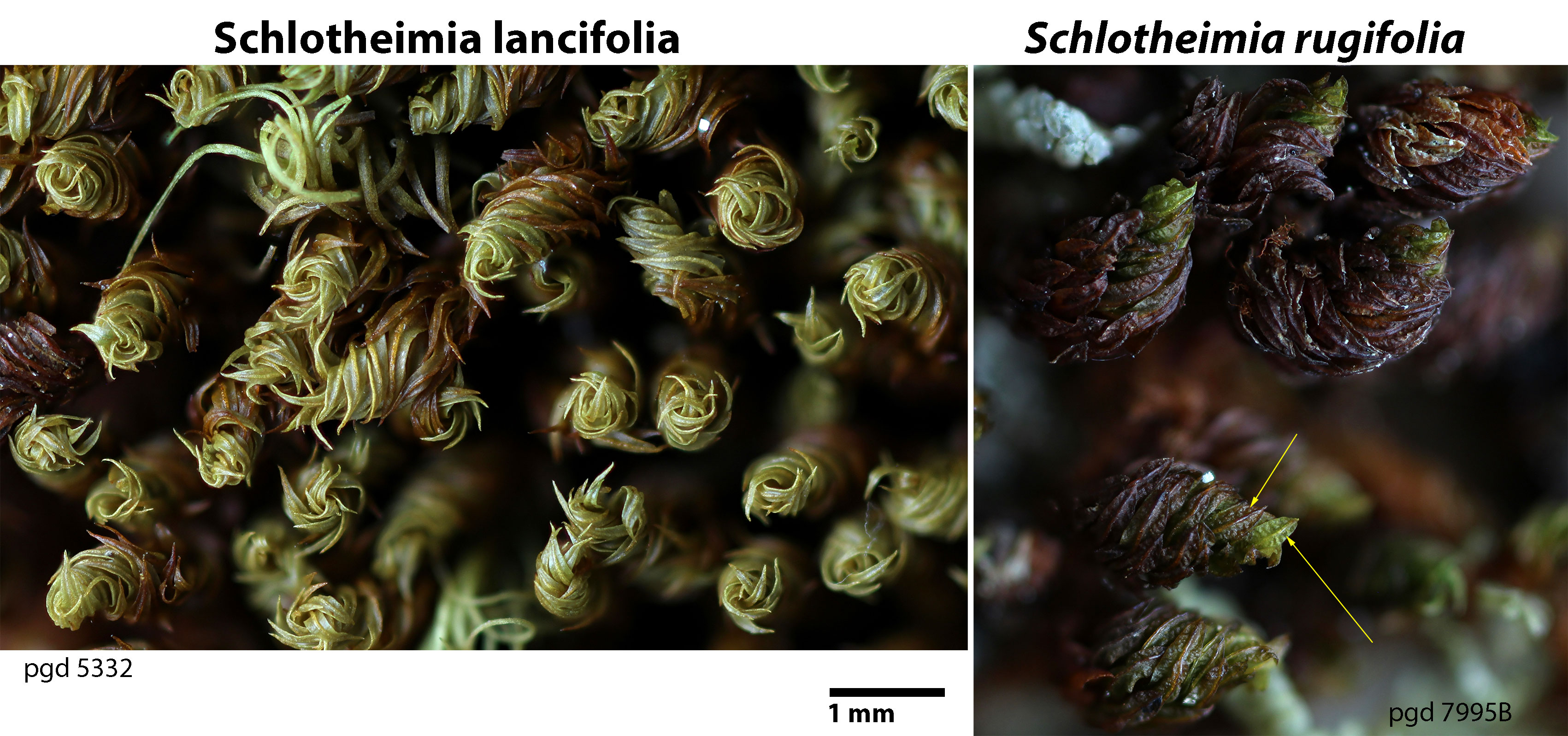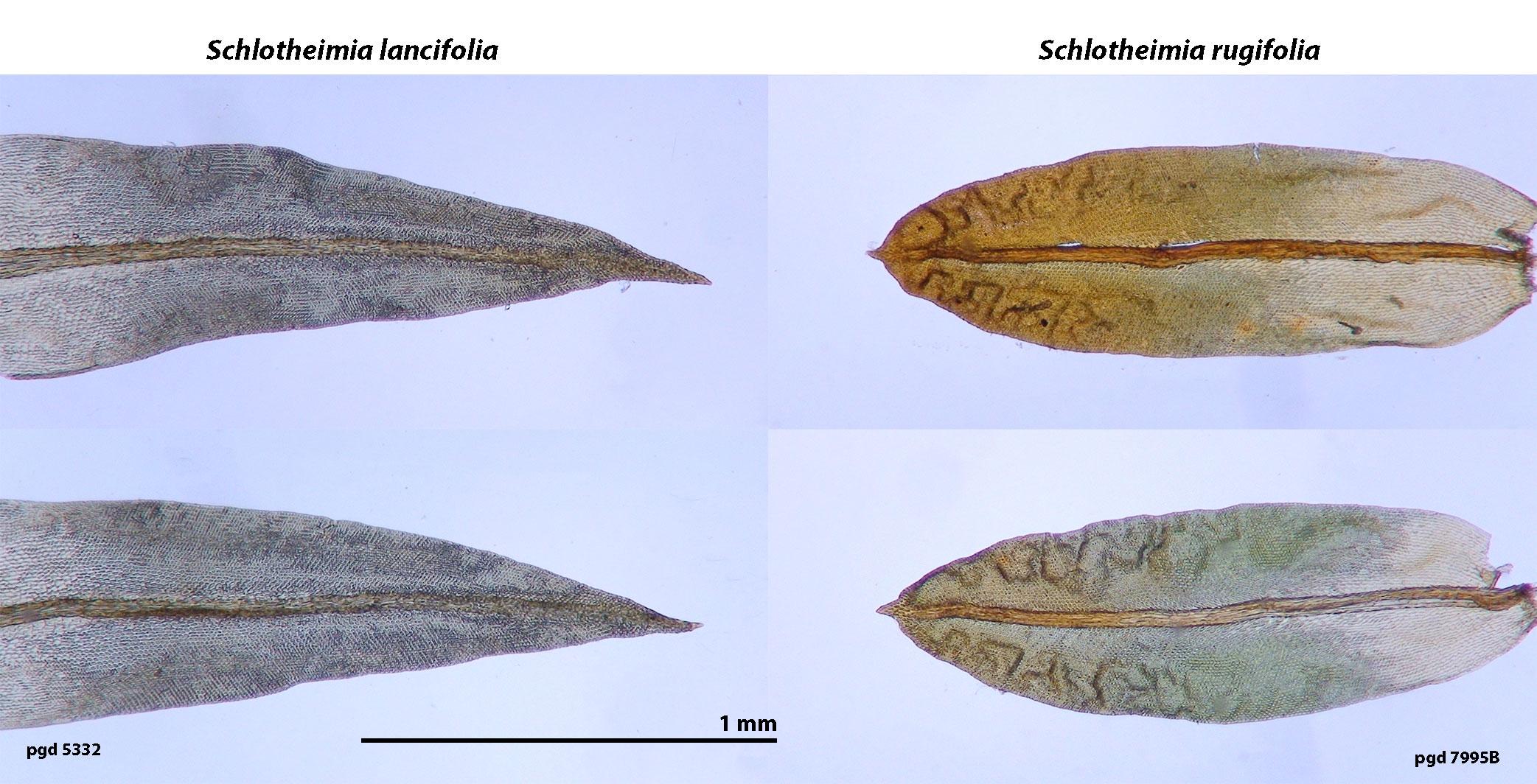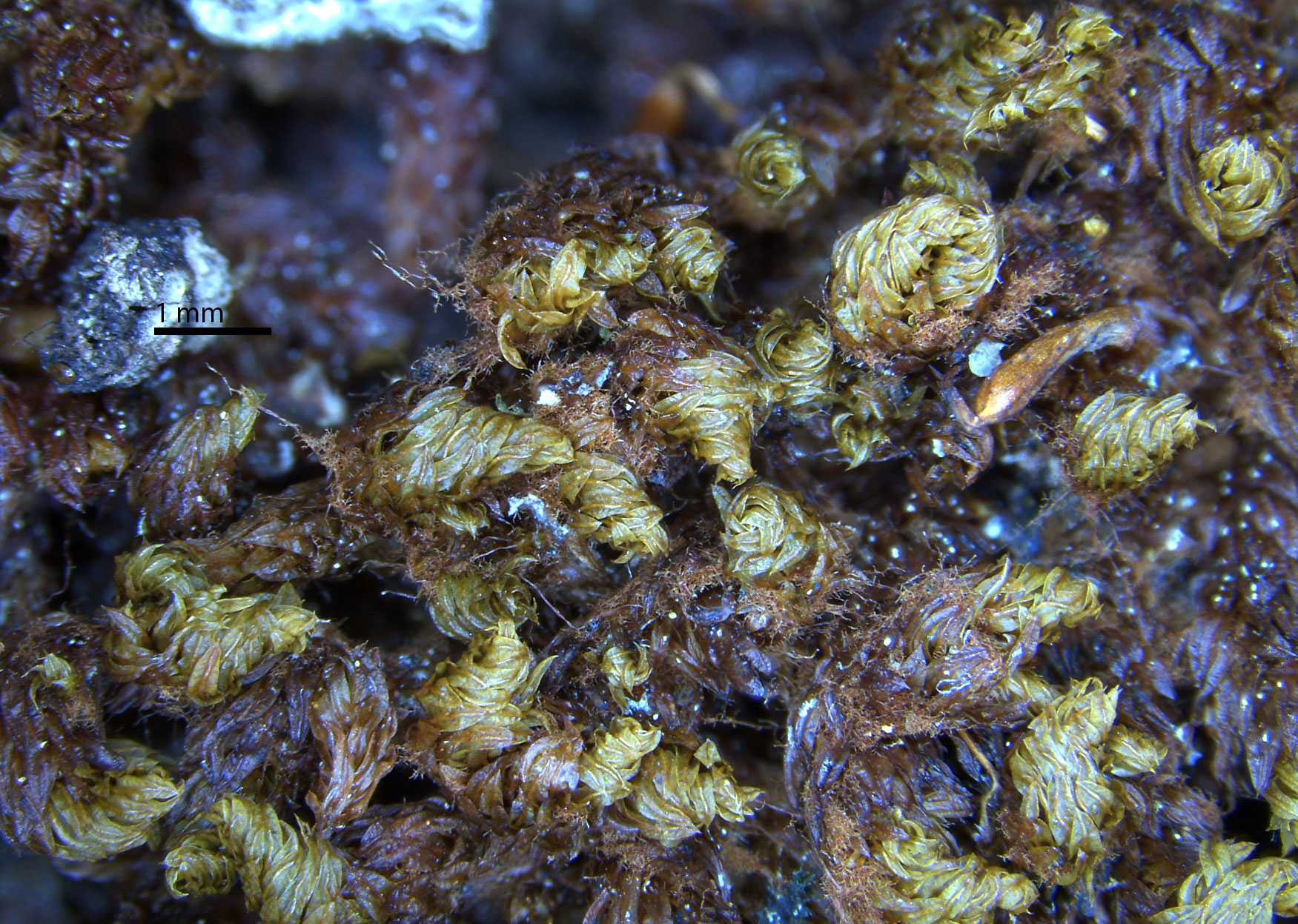Schlotheimia lancifolia E. B. Bartram
Family: Orthotrichaceae
Synonyms
none
NatureServe Conservation Status
G2
Distribution
North America. U.S.A. North Carolina, South Carolina. Greater Antilles. Dominican Republic (Sastre-De Jesús et al. 2010).
Habitat
Regionally, cove hardwood forests, hemlock-hardwood forests, oak-chestnut forests, and forested (pitch pine-white oak) serpentine woodlands. Limited to rock in serpentine woodlands, elsewhere found on trunks of trees and logs. Occurrences on logs probably represent arboreal populations that have persisted and possibly spread along the trunk after trees have fallen. Not known to occur on decorticated trunks. Phorophytes listed on specimen labels include yellow birch, oak, red oak, hemlock, yellow poplar, maple, and American holly. In the past, noted to persist at the edges of human altered environments (golf courses and roadsides). The species, along with the similar S. rugifolia, appears to be light loving and restricted to partially open areas when found at ground level, otherwise found on tree trunks high above the ground (to 8 meters, Vitt 2014). Regionally, moderate elevations (2000-4500 ft).
Brief Description and Tips for Identification
Description derived from Crum and Anderson (1981) and Vitt (2014).
Plants mat forming, green, brown, usually reddish brown. Stems horizontal, creeping over the substrate, numerous ascending branches obscure the main stems. Leaves 1.5 – 2 mm long, crowded and spirally twisted around the branches when dry. Leaves costate, “oblong-lanceolate, gradually narrowed to a slender apex, not at all undulate” (Crum and Anderson 1981, p. 743). Leaf cells smooth.
Pseudautoicous. Dwarf male plants epiphytic on female plants. Asexual reproduction by axillary clusters of brood bodies. Reproductive structures not always present.
Regionally, Schlotheimia is a distinctive genus easily recognized in the field due to the usually reddish coloration and dry habit of leaves spirally twisted around the branches. In the field, prior to gaining experience with S. lancifolia, one may confuse Zygodon viridissimus with S. lancifolia; however, Z. viridissimus lacks the distinctive reddish coloration and strongly spiraled leaves when dry. Z. viridissimus has papillose leaf cells eliminating any confusion in the lab.
The common Drummondia prorepens is vaguely similar having horizontal, creeping stems bearing ascending branches with crowded leaves. It differs in the dark green to blackish green color, the leaves not contorted when dry, and leaves channeled at the costa. Macrocoma sullivantii (also Orthotrichaceae along with Drummondia and Zygodon) has a yellowish brown color, is more irregularly branched, usually fertile with calyptrae that are densely hairy, and leaves are not contorted when dry.
S. lancifolia is habitually similar to S. rugifolia from which it differs as follows (S. lancifolia characters listed first): leaves 1.5 – 2 mm long vs. 1.4-1.6 mm long; leaf blade not rugose (not undulate or wrinkled) vs. leaf blade rugose wet or dry; leaves gradually narrowed to a slender apex vs. leaves abruptly apiculate; calyptrae smooth near the apex vs. roughened near the apex. With careful use of a hand lens it is possible to distinguish the two species in the field based on leaf shape.
Salient Features
- Usually reddish brown
- Leaves spirally twisted around branches when dry
- Leaves gradually narrowed to a slender apex
References
Anderson, L. E. 1958. The Mosses of North Carolina. VIII. Grimmiaceae to Orthotrichaceae. The Bryologist, 61(4), 285-313.
Bartram, E. B. 1932. Schlotheimia lancifolia, sp. nov. The Bryologist, 35(1), 9-10
Crum, H. A., and L.E. Anderson. 1981. Mosses of Eastern North America (Vol. 2). Columbia University Press
Sastre-De Jesús, I., Pérez, M. P., and Marin, A. M. 2010. Mosses of the Dominican Republic: species catalogue, elevation distribution and floristic affinities. Harvard papers in botany, 415-446.
Vitt, D. H. 2014. Orthotrichaceae. In: Flora of North America, North of Mexico 28: 37–82.
Wagner, K. A. 1949. The Operculum of Schlotheimia lancifolia Bartram. The Bryologist, 52(1), 33-34
Habitat
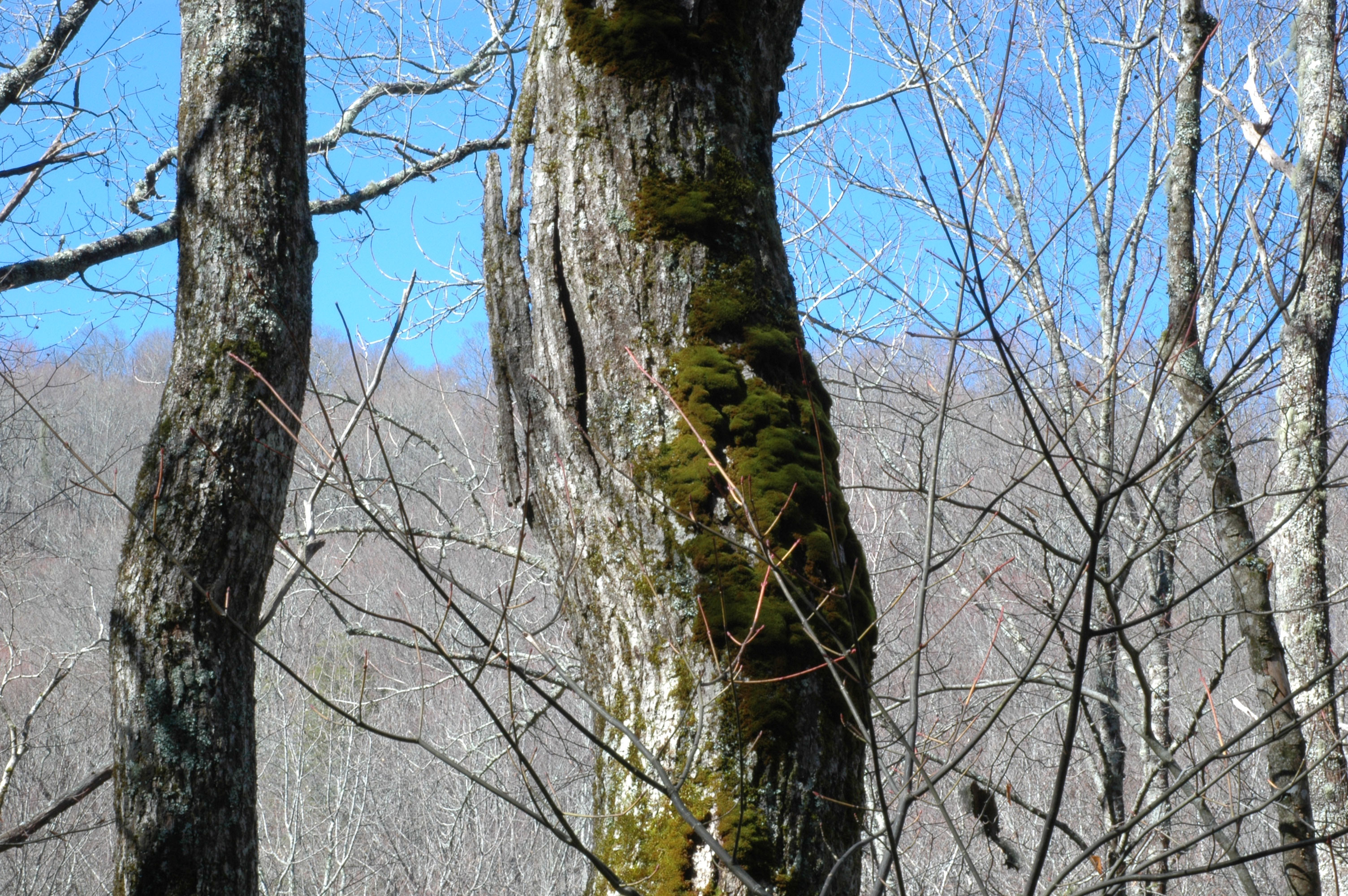
Schlotheimia lancifolia
High up on the trunk of a dead, roadside red oak tree. Abundant in the 2017 photo above. Large masses of other mosses are common high above the ground on tree trunks in the humid forests of the Southern Appalachians but lack the distinctive, if subtle, reddish coloration. In 2000, Gary Kauffman and Paul Davison successfully threw rocks at the tree above to dislodge a specimen for identification.
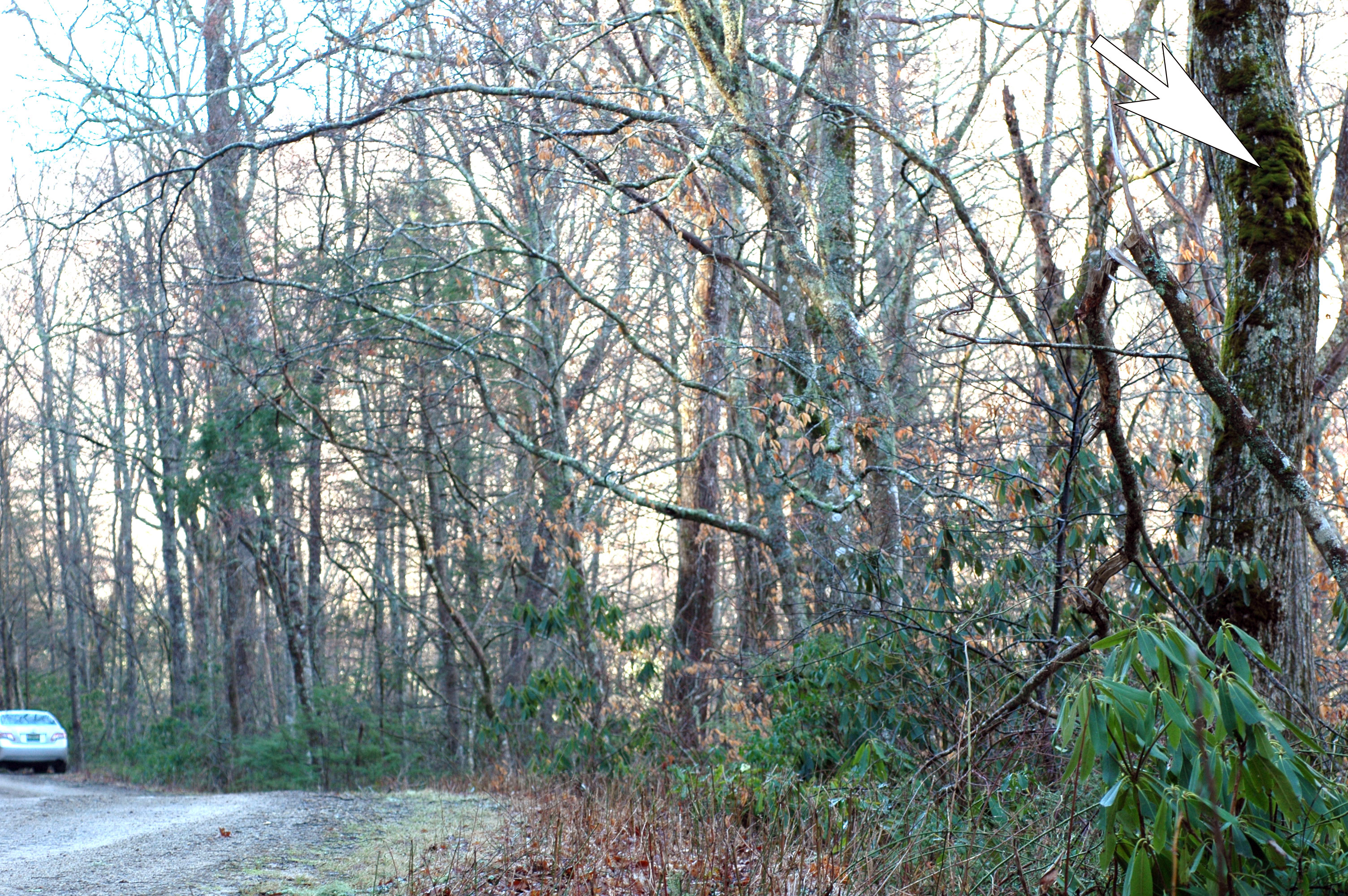
Schlotheimia lancifolia
The same roadside tree as in the previous image. The arrow indicates large mats of S. lancifolia. From a distance it is difficult to know what kind of moss is present. Schlotheimia lancifolia and S. rugifolia both are habitually similar with a distinctive reddish hue. Mats of Leucodon and other mosses may be confused from a distance.
Habitat
Habit
S. lancifolia vs. S. rugifolia
Schlotheimia rugifolia
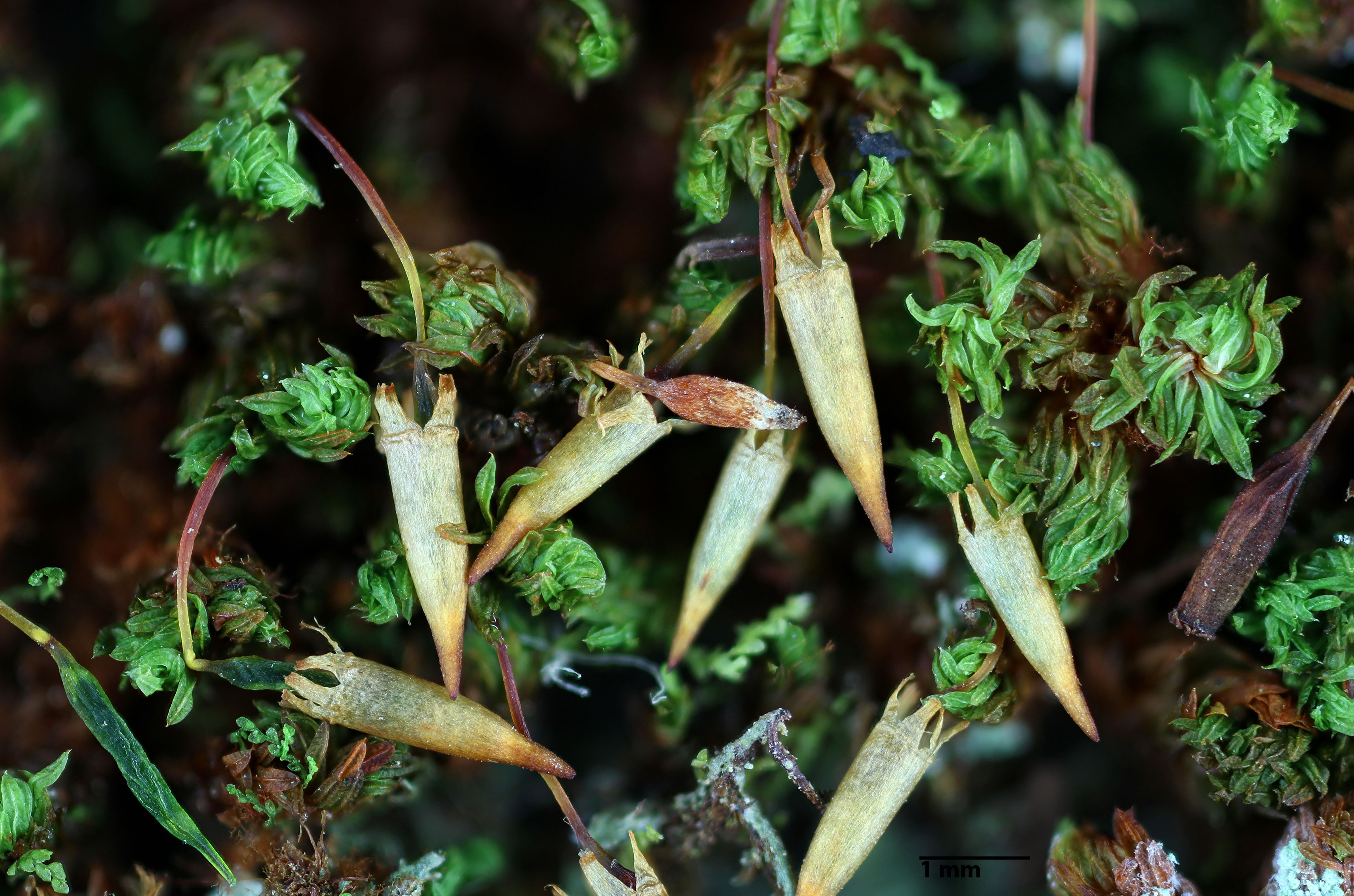
Schlotheimia rugifolia
Mature calyptrae covering immature capsules. Calyptrae of S. lancifolia are similar in shape but lack the roughened texture present at the apex. The roughened texture near the apex (along the conical brown zone as seen above), described as "papillose distally" by Vitt (2014), is just detectable in the image above.


